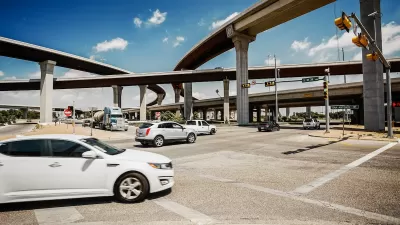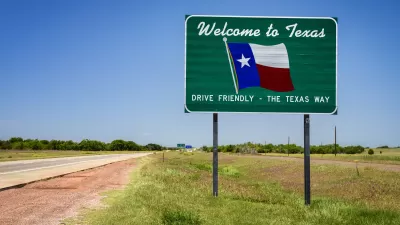Vision Zero safety improvements at High Injury Roadways and implementation and Leading Pedestrian Intervals are reducing crashes in Austin. The city has a long way to go to achieve Vision Zero.

The City of Austin Transportation Department (ATD) has been seeing promising results from its Vision Zero initiative," according to an article published by Fox 7 Austin.
According to ADT, early results of Vision Zero projects "show significant effects on reducing severe crashes," in the city, even while traffic safety statistics worsen in other parts of the city and around the nation.
The ADT's Vision Zero team has so far implemented safety improvements at six of 13 "High Injury Roadways" identified in the city. "Crashes resulting in deaths and serious injuries were down 17% on the six HIRs that are considered substantially complete this year through August compared to the 2017-19 average in the same eight-month period," according to the article's summary of the ADT's preliminary data on the changes.
Still, the rest of the city is seeing the same trends toward increasing traffic fatalities as the rest of the country. "There have been more than 100 fatalities on the roads this year citywide, up 30% from 2020," according to the article.
FULL STORY: Vision Zero showing positive results in reducing crashes, fatalities

Trump Administration Could Effectively End Housing Voucher Program
Federal officials are eyeing major cuts to the Section 8 program that helps millions of low-income households pay rent.

Planetizen Federal Action Tracker
A weekly monitor of how Trump’s orders and actions are impacting planners and planning in America.

Ken Jennings Launches Transit Web Series
The Jeopardy champ wants you to ride public transit.

Crime Continues to Drop on Philly, San Francisco Transit Systems
SEPTA and BART both saw significant declines in violent crime in the first quarter of 2025.

How South LA Green Spaces Power Community Health and Hope
Green spaces like South L.A. Wetlands Park are helping South Los Angeles residents promote healthy lifestyles, build community, and advocate for improvements that reflect local needs in historically underserved neighborhoods.

Sacramento Plans ‘Quick-Build’ Road Safety Projects
The city wants to accelerate small-scale safety improvements that use low-cost equipment to make an impact at dangerous intersections.
Urban Design for Planners 1: Software Tools
This six-course series explores essential urban design concepts using open source software and equips planners with the tools they need to participate fully in the urban design process.
Planning for Universal Design
Learn the tools for implementing Universal Design in planning regulations.
Heyer Gruel & Associates PA
Ada County Highway District
Institute for Housing and Urban Development Studies (IHS)
City of Grandview
Harvard GSD Executive Education
Toledo-Lucas County Plan Commissions
Salt Lake City
NYU Wagner Graduate School of Public Service





























